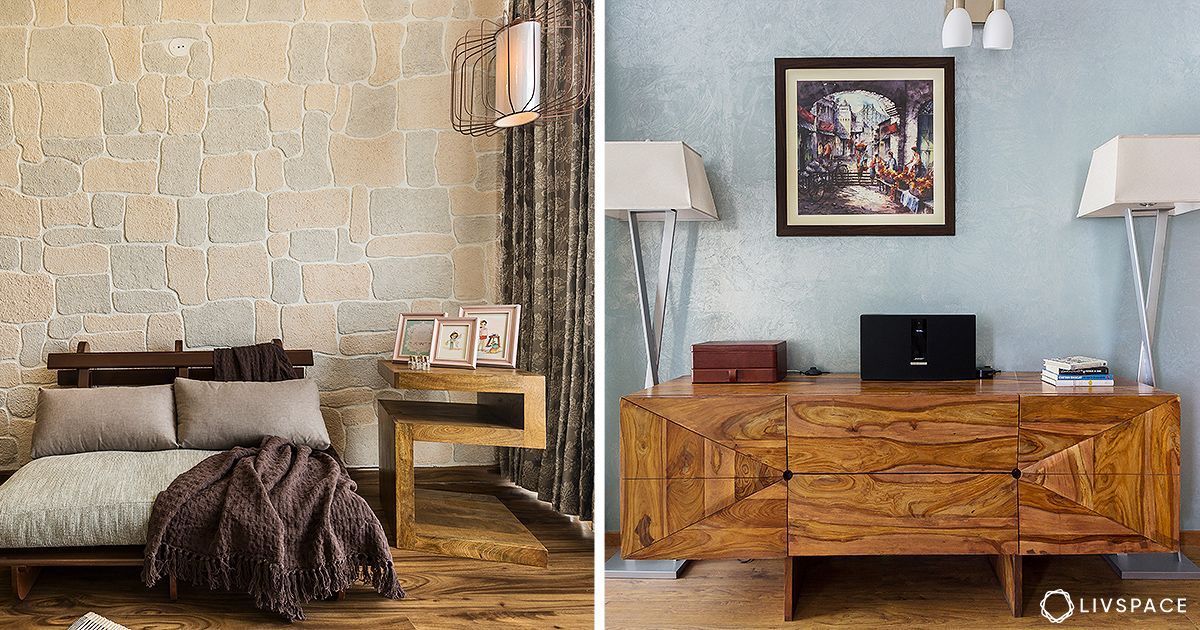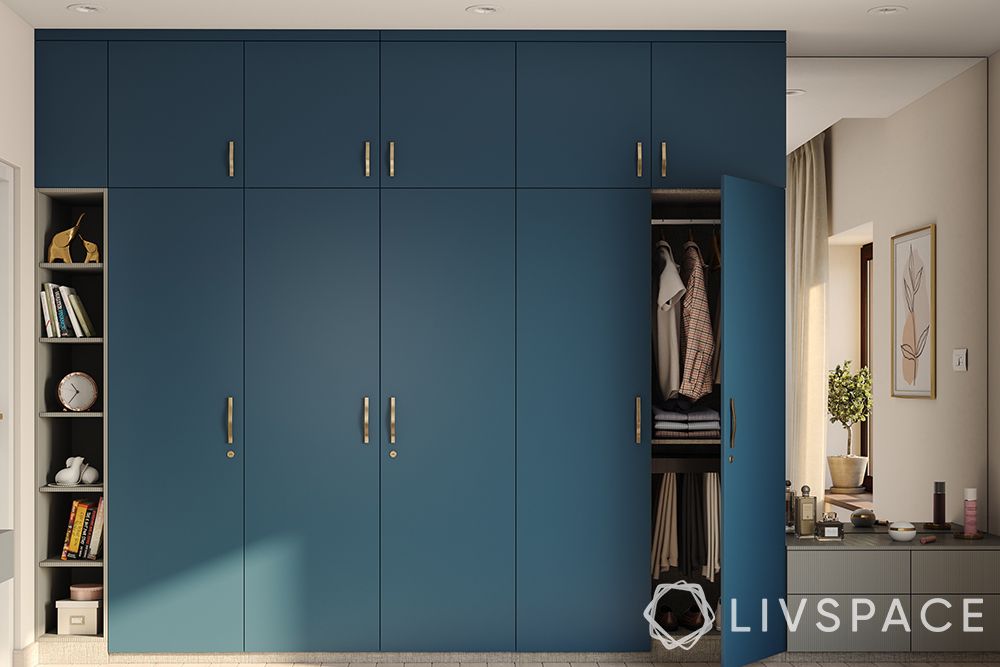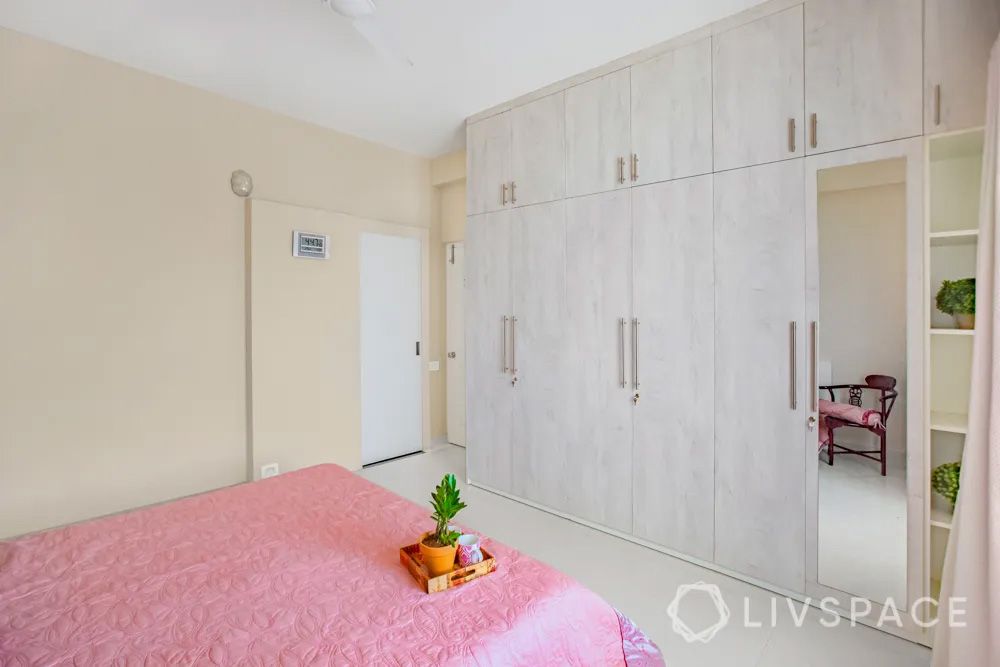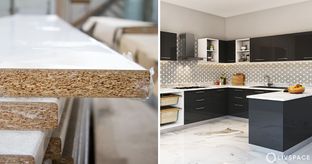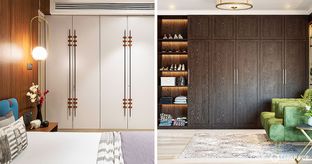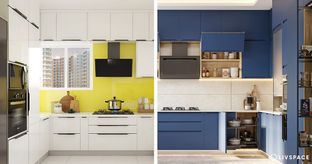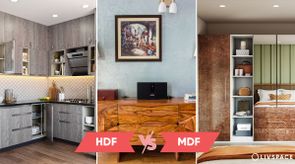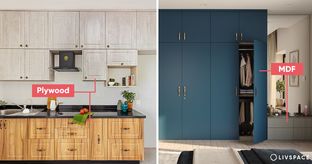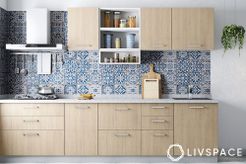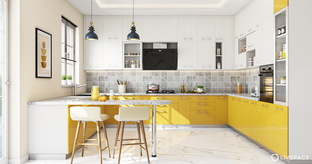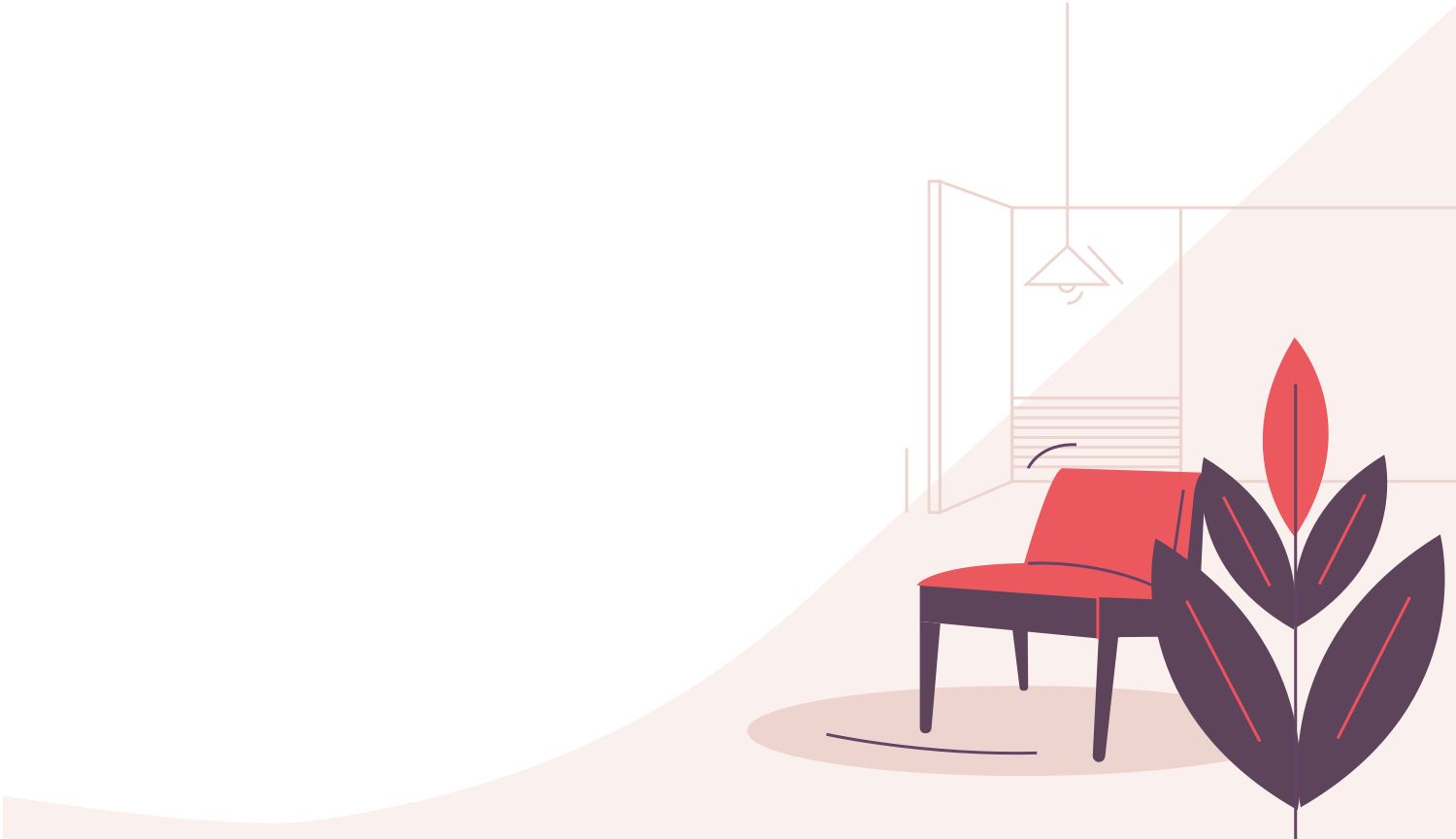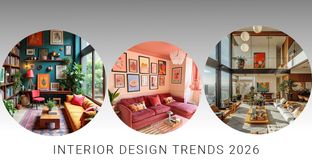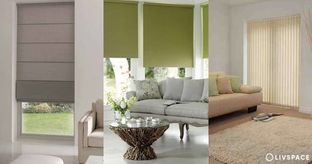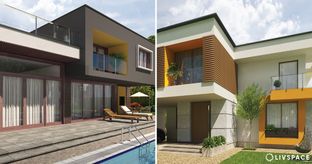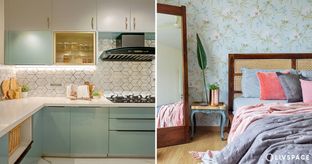In This Article
MDF (Medium density fibreboard) and Particle Board are both types of pressed wood products, often used in kitchen cabinets, shelves and furniture. While the two materials share similarities in terms of uses, they have some crucial differences in terms of durability, cost and strength. Let’s take a look at MDF vs Particle Board and see which should be used and why.
Both MDF and Particle Board are used alternatively; that’s more reason why a comparison between the two is necessary.
What Is MDF?
Made of wooden particles glued together with resin under extreme heat and pressure, MDF or medium density fibreboard is a type of engineered wood. Previously, carpenters believed that it was a type of low-grade wood that crumbles to pressure or swells when it comes in touch with water.
However, that’s far from the truth. MDF material is economical, durable and quite a popular choice for modular products.
In terms of consistency, MDF is believed to be more compact, dense and homogenous than plywood. While this was not the case when it was first introduced, with the advances in manufacturing and technology today, high-end MDF once processed into a panel is more durable than natural wood.
Also Read: Is MDF Material Good?
What Is Particle Board?
Also known as chipboard, Particle Board is made from a combination of waste materials. Of all the core materials offered at Livspace, Particle Board is believed to be the most economical option.
Also, a type of engineered wood, Particle Board is made from recycled timber and is one of the best eco-friendly options for your dream home. So, MDF and HDF-HMR are also types of engineered wood. But out of these three, Particle Board is the lightest.
It’s also the least dense so that the particles have more gaps in between them. Around the world, kitchens are made exclusively out of Particle Board for these reasons. However, Indians kitchens come in touch with a lot of moisture. Particle Board isn’t very moisture-resistant on its own.
So, in India, we restrict its usage to areas that don’t come in touch with a lot of water – wall units, false ceilings and the like.
At Livspace, we use the Particle Board Indian standard 3087 in conjunction with other core materials, which helps bring down the overall cost. If you’re planning renovations or designing a new home, you know how important it is to bring down cost without cutting corners.
What’s the Difference Between MDF and Particle Board?
MDF and Particle Board have many differences. Let’s take a look at what they entail:
| MDF | Particle Board | |
| Look | MDF has a smooth and consistent look. No visible wood grains. | Particle Board is consistent but has a rough look, and is beige in colour due to the wood chips. |
| Strength | High due to high density, medium in comparison to plywood | Less than MDF due to less density |
| Durability | Yes | Yes |
| Moisture-Resistance | Yes to some extent, but susceptible to water damage | No, very susceptible to water damage |
| Weight | 680 to 850 kg/ m3 heavier than Particle Board | 590 to 700 kg/m3 lighter than MDF |
| Lifespan | Can last up to 10 years with maintenance | Can last up to 10 years with maintenance |
| Voids | Densely compacted board | Loosely compacted board |
| Painting | Can be directly painted on | Cannot be directly painted on |
| Screw holding capacity | Medium | Less in compaison to MDF |
| Load carrying capacity | Medium | Less in comparison to MDF |
| Uses | Economic furniture | Budgeted furniture |
| Toxicity | Be cautious of the formaldehyde | Eco-friendly |
| Shape Deformation | Minor damage | Can expand when in contact with water |
| Composition | Made of very fine wood fibres and resin | Made from sawmill shavings and wood chips |
MDF vs Particle Board Cost: What’s the Difference?
When it comes to the difference between MDF and Particle Board, there’s also cost we need to consider.
| MDF | Particle Board | |
| Cost | ₹40 – ₹90 per sft | ₹30 – ₹60 per sft |
MDF Board: Pros & Cons
Now, let’s take a detailed look at the advantages and disadvantages of MDF Board.
PROS
- MDF board is the most-preferred choice for painting, ducco and PU work
- It’s value for money, so it helps you make economic choices
- Thanks to its suitable density, MDF board has great machining capabilities
CONS
- Can crack and split if extreme load is given
- Has a tendency to absorb moisture, so avoid usage on countertops & sinks
- Can create bubbles when laminate pasting is being done. Hene, it’s best to use machine paste
Also Read: What is Engineered Wood and Why It Is the Perfect Choice for You?
Particle Board: Pros & Cons
PROS
- Very light-weight due to its low density
- Particle Board is financially a great choice due to its affordability also when particleboard vs plywood is considered
- Also has great thermal and soundproof features
CONS
- Less durable as it’s susceptible to moisture damage
- Screw holding capacity is comparatively less
- Shape deformities can happen without proper maintenance
How Can Livspace Help You?
At Livspace, when we build your dream home, we use the best branded quality materials which undergo 146 quality checks. Your local carpenters might be using inferior quality materials to cut costs. However, our modular products have the trusted seal of a flat 10-Year warranty, and our three advanced technologies:
- AntiBubble Technology for a smooth and seamless finish on your panels
- AquaBloc Technology to seal your edgebands for life and repel moisture
- DuraBuild to make your cabinets stand the test of time
Book an online consultation with us to choose the most effective materials that help you lay a sturdy foundation.
